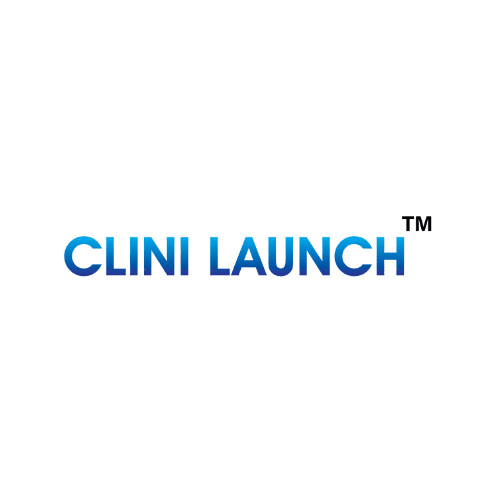Best Clinical Research Institute
- Home
- Pharmacovigilance Basic Interview Questions (BIQs)
Pharmacovigilance Basic Interview Questions (BIQs)

FREE Career Counselling!
Talk to CliniLaunch’s expert counselor. Get Insights on a range of progressive career options today!
Why is Pharmacovigilance a great career choice?
Make a difference in patient safety in the healthcare industry.
Pharmacovigilance is a booming field that plays a vital role in public health. It is a scientific discipline encompassing the systematic collection, evaluation, monitoring, reporting, and prevention of adverse reactions associated with various pharmaceutical products out there in the market. Upskilling in this course ensures medication safety throughout a drug’s lifecycle, covering pre-clinical development, clinical trials, and post-marketing surveillance
Passionate about healthcare, and science? Wish to make a positive impact, then this is a career path that can be a perfect fit for professionals. Here are some reasons why you should consider joining this essential field:
Who is the Pharmacovigilance course course ideal for?
This course is designed for those seeking to enter or advance in a pharmacovigilance career. Ideal for:
- Individuals with a science background seeking a career change into pharmacovigilance
- Healthcare professionals looking to expand their skillset and knowledge in drug development and safety.
- Anyone interested in a rewarding career safeguarding public health through medication safety monitoring.
Make a real difference
Ensure medication safety for global patients
Intellectual challenge
Analyze data, identify trends, and make informed decisions about drug safety
Continuous learning
Stay current with evolving science and regulations
Growing demand
The growing pharma industry needs qualified professionals, leading to job security and a ocean of career options
Diverse career paths
Find your fit in data management, medical writing, regulatory affairs, and many more
Competitive salaries and benefits
Pharmacovigilance offers competitive salaries and benefits best in the industry
Frequently Asked Questions
Pharmacovigilance monitors medication safety and effectiveness. It analyzes data on adverse drug reactions (ADRs) to ensure patient safety
Look at the various phases involved in clinical trial phases:
Phase 1: Small group tests for safety and dosage
Phase 2: Larger group tests for efficacy and side effects
Phase 3: Extensive tests to confirm phase 2 results and check for rare side effects
Phase 4: Post-marketing surveillance to assess real-world performance
Signal detection identifies potential new risks (ADRs) associated with medication through data analysis and scientific review
An Adverse Drug Reaction (ADR) is an unintended, harmful response to a medication taken at normal doses, requiring medical attention or causing significant discomfort or health risks
ADR categories include predictable (type A), unpredictable (type B), chronic (type C), delayed (type D), and end-of-treatment (type E)
There may not be a causal relationship between a drug and an ADE, whereas, there is a causal link between a drug and an adverse drug reaction
Causality assessment estimates how likely a medication caused an adverse event. It weighs factors like timing and alternative explanations
This weighs the potential risks of medication against its benefits to make informed decisions about its use on patient health
USA : United States Food and drug administration (USFDA)
UK : European Medicines Agency (EMEA)
Japan : Ministry of Health, Labour and Welfare (MHLW)
India : Central Drugs Standard Control Organization (CDSCO)
Compliance with pharmacovigilance regulations are ensured using robust systems for ADR reporting, regular pharmacovigilance training, and accurate documentation that proves crucial
A PSMF is a document that details an organization’s pharmacovigilance system, including processes, procedures, and structure
Through national regulatory bodies, pharmaceutical companies, and online systems like the World Health Organization’s VigiBase are the means how ADE reporting is conducted
Good pharmacovigilance practices (GVP) guidelines ensure there is consistent application of pharmacovigilance activities throughout a medication’s lifecycle, promoting patient safety through standardized procedures
High-quality data ensures accurate and reliable safety assessments, leading to better medication safety decisions
Unblinding reveals treatment assignments during a trial. It’s done only for patient safety or ethical reasons and follows protocols to minimize bias
Risk Management Plans (RMPs) outline proactive measures by pharmaceutical companies to identify, minimize, or prevent medication risks. They even include communication and safety monitoring strategies as well
PSURs provide regular safety updates on medications throughout their lifecycle. These reports also include information about adverse events, new safety findings, and risk-benefit assessments
These systematic assessments evaluate an organization’s pharmacovigilance activities for compliance and identify areas for improvement time-to-time
A pharmacovigilance officer oversees ADR collection, analysis, and reporting. The officers ensure regulatory compliance and contribute to patient safety
The US FDA, European Medicines Agency (EMA), and Indian Pharmacopoeia Commission (IPC) are some regulatory bodies that monitor drug safety and enforce pharmacovigilance regulations
Pharmacovigilance safeguards public health by identifying and managing medication risks. Its procedures aid in making sure only safe and effective drugs reach the market
Challenges in pharmacovigilance include under-reported ADRs, lack of healthcare professional awareness, managing large data volumes, global regulation harmonization, and emerging technologies
Technology is enhancing pharmacovigilance through automated ADR reporting, data mining for signal detection, electronic health record integration, and real-time monitoring tools
Volume 9A provides comprehensive guidelines on pharmacovigilance for Marketing Authorization Holders and Competent Authorities. This includes international standards and covers procedures, roles, electronic exchanges in the EU, and communication practices.
Patient demographics (like age, gender, race), suspect product details (like drug, dose, therapy duration), and adverse event details (like event, onset date, seriousness, end date)
Medical Dictionary for Regulatory Activities (MedDRA) is a standardized medical terminology used internationally to collect, record, process, analyze, and report information on medications and their effects. It facilitates communication and data sharing among regulatory bodies, pharmaceutical companies, and healthcare professionals, ensuring consistency and clarity in pharmacovigilance activities
MedDRA organizes medical terms in a five-level hierarchy
- SOC (System Organ Class): Broadest category
- HLGT (High-Level Group Term): Groups SOC terms based on anatomy, function, etc.
- HLT (High-Level Term): Groups related PTs
- PT (Preferred Term): The most specific term for reporting.
- LLT (Lowest Level Term): Not used for reporting, provides more detail
E2a, E2b, and E2c are International Council for Harmonization (ICH) guidelines for clinical safety data management and reporting
- E2a: Defines terms and processes for expedited reporting of adverse events during drug development
- E2b: Focuses on data elements for transmitting Individual Case Safety Reports (ICSRs)
- E2c: Provides guidelines for Periodic Safety Update Reports (PSURs) on marketed drugs
FREE Career Counselling
We are happy to help you 24/7

Launch your fulfilling pharmacovigilance career with CliniLaunch's upskilling course
Master the in-demand skills and knowledge required for individuals to professionally thrive in the pharmacovigilance field with CliniLaunch’s comprehensive upskilling course. Our industry-aligned program, developed by experts, equips you to stand out from the competition. Crowd
Healthcare Courses
Ready to become a healthcare professional with our programs?

